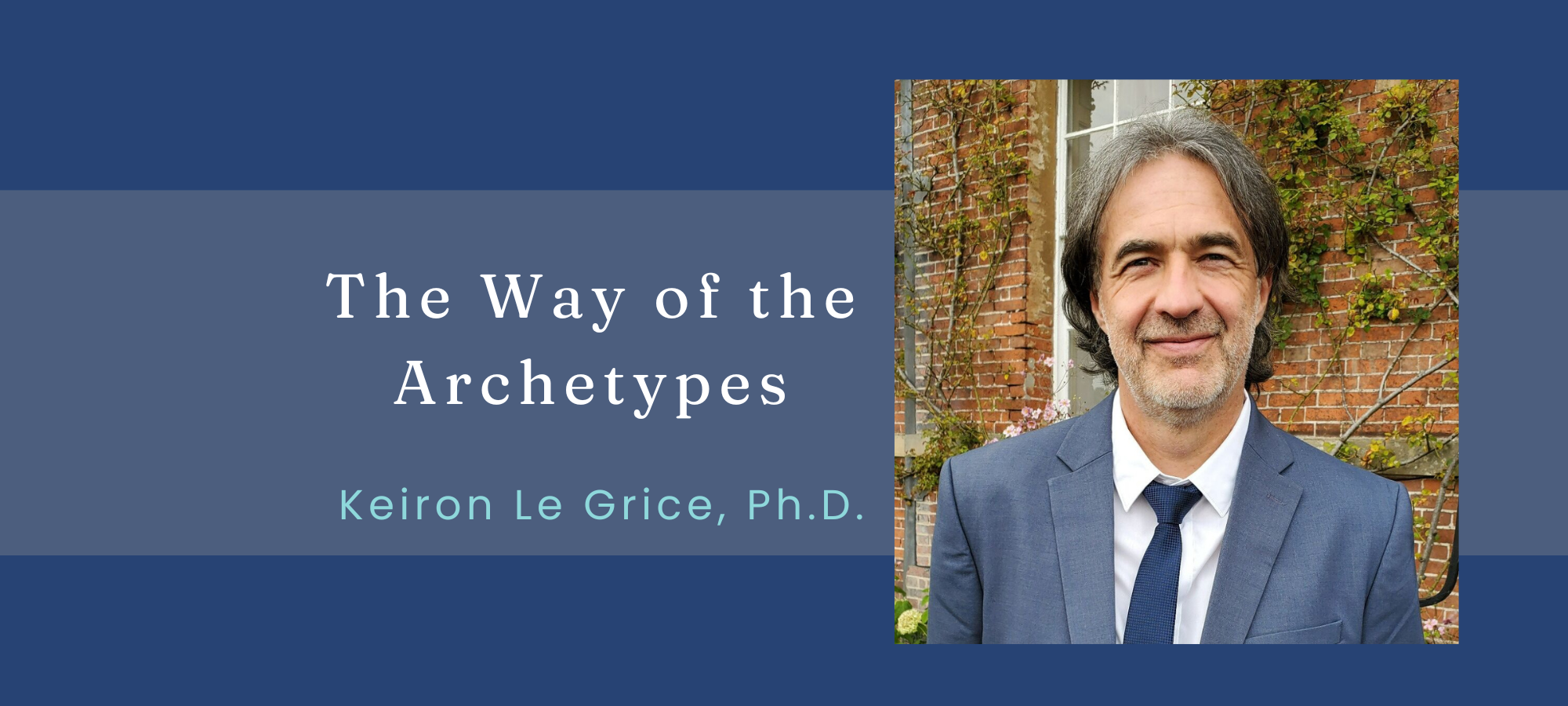Keiron Le Grice is a Co-chair of the M.A./Ph.D. in Depth Psychology with Specialization in Jungian and Archetypal Studies (Hybrid-DJA & Fully Online-DJO) program. He is also the author of several books, including the recently published The Way of the Archetypes: Volumes I, II, and III. I’m delighted to discuss with him these three seminal works in Jungian archetypal studies and astrology.
Angela Borda: I’m always curious when I see a prolific writer and scholar pursue a subject over the course of decades, to see how their ideas and understanding of their subject have changed. You’ve been teaching and publishing on the topic of archetypes since 2010. What is at the heart of this enduring inspiration for you, and have you found your engagement with and understanding of archetypes have changed over time?
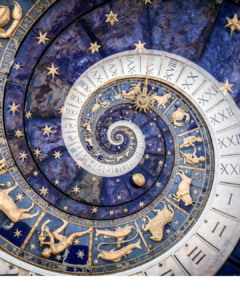 Keiron Le Grice: Thank you for asking, Angela. Archetypes are principles and powers beyond the control of the human will, often existing outside of our awareness. They are the universal factors in our experience—such as love, freedom, heroism, and so forth. Archetypes can be imagined as both ideals and instincts. We each have our own experience of these factors as they find expression in our lives. Archetypes are the motive powers of life—they stir us, grip us, shape our imagination, and condition our behavior. The ancients called such powers gods. Following C. G. Jung, we might imagine them not as gods in a literal sense, but as formative principles existing in the background order of the unconscious mind that animate us and shape our experience of the world.
Keiron Le Grice: Thank you for asking, Angela. Archetypes are principles and powers beyond the control of the human will, often existing outside of our awareness. They are the universal factors in our experience—such as love, freedom, heroism, and so forth. Archetypes can be imagined as both ideals and instincts. We each have our own experience of these factors as they find expression in our lives. Archetypes are the motive powers of life—they stir us, grip us, shape our imagination, and condition our behavior. The ancients called such powers gods. Following C. G. Jung, we might imagine them not as gods in a literal sense, but as formative principles existing in the background order of the unconscious mind that animate us and shape our experience of the world.
My initial interest in this kind of superordinate order of principles and powers was awakened by my early exposure to astrology and Jungian psychology in my late teens. Over the years, through private study and undertaking Masters and Doctoral degrees in Philosophy and Religion, I developed a fuller understanding of the nature of archetypes and their central place in the history of Western thought. I benefitted tremendously from my studies with Richard Tarnas, a professor at CIIS in San Francisco, and author of The Passion of the Western Mind and Cosmos and Psyche. His work situates astrology in the lineage of mythic, religious, philosophical, and psychological traditions that have been concerned with universal principles, such as Platonic and Pythagorean Forms.
In my first book, The Archetypal Cosmos, published in 2010, I attempted to set out the framework of an archetypal worldview in which the workings of astrology seem more plausible and comprehensible, drawing especially on Jungian psychology the new-paradigm sciences. In many ways, this book is the theoretical foundation of my recent publications. I also wrote a book on the possible archetypal astrological meaning of the dwarf planet Eris (Discovering Eris), and I co-edited Jung on Astrology with my Pacifica/DJA colleague Safron Rossi. Before that, I co-founded an academic journal called Archai: The Journal of Archetypal Cosmology.
Angela: You’ve just completed three books in a four-book series called The Way of Archetypes. Can you tell us how the series was conceived and undertaken? Did you set out to write four books or did the idea develop over time?
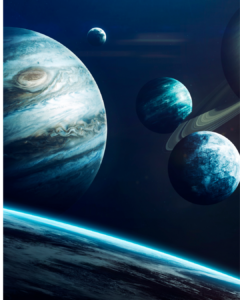 Keiron: In 1999-2000, I had wanted to write a book applying astrology to help illuminate the themes and dimensions of the hero’s journey (as understood by Joseph Campbell) and the Jungian individuation process, but I felt at that time I needed to first address the theoretical foundations of astrology. This focus took form in The Archetypal Cosmos. In 2013-2014, I was able finally to begin work (very slowly!) on The Way of the Archetypes, which picks up my original intention of exploring how astrology can serve as a guide to spiritual life and psychological transformation and growth. I imagined at first it would be a single volume, but as the draft took shape it was apparent that there was too much material to house in just one book so I took the decision to split it into multiple volumes. I had seen this multi-volume format work well in other series, such as Joseph Campbell’s The Masks of God. I had the title in mind quite early in the writing process, and I eventually found a way to divide the content into fairly equal parts that made sense in terms of the book’s themes and content—Volume I covering key Jungian concepts, especially archetypes and individuation, in relation to archetypal astrology; Volume II concerned chiefly with the astrological planetary archetypes Saturn and Neptune; and Volume III focusing on the Pluto and Uranus principles. These four archetypes are the most significant factors in seeking to understand experiences of major psychospiritual transformation in our lives. Volume IV, which I will be working on in the years to come, will apply astrology to help us understand the emergence of a new myth and the evolution of religious consciousness, focusing on combinations of Uranus, Neptune, and Pluto archetypes.
Keiron: In 1999-2000, I had wanted to write a book applying astrology to help illuminate the themes and dimensions of the hero’s journey (as understood by Joseph Campbell) and the Jungian individuation process, but I felt at that time I needed to first address the theoretical foundations of astrology. This focus took form in The Archetypal Cosmos. In 2013-2014, I was able finally to begin work (very slowly!) on The Way of the Archetypes, which picks up my original intention of exploring how astrology can serve as a guide to spiritual life and psychological transformation and growth. I imagined at first it would be a single volume, but as the draft took shape it was apparent that there was too much material to house in just one book so I took the decision to split it into multiple volumes. I had seen this multi-volume format work well in other series, such as Joseph Campbell’s The Masks of God. I had the title in mind quite early in the writing process, and I eventually found a way to divide the content into fairly equal parts that made sense in terms of the book’s themes and content—Volume I covering key Jungian concepts, especially archetypes and individuation, in relation to archetypal astrology; Volume II concerned chiefly with the astrological planetary archetypes Saturn and Neptune; and Volume III focusing on the Pluto and Uranus principles. These four archetypes are the most significant factors in seeking to understand experiences of major psychospiritual transformation in our lives. Volume IV, which I will be working on in the years to come, will apply astrology to help us understand the emergence of a new myth and the evolution of religious consciousness, focusing on combinations of Uranus, Neptune, and Pluto archetypes.
Angela: Volume 1: Universal Principles and Individuation seems a good place to start. I didn’t realize that Jung included astrology in his study of archetypes. I’m curious how viewing astrology in archetypal terms can help to illuminate the process of individuation?
Keiron: Yes, Jung was very interested in astrology throughout his life, and he even used astrological charts in analytic work with his patients. He coined the term “planetary archetype” in viewing astrology as an ancient forerunner to his own archetypally informed analytical psychology. He recognized that, although astrology is often viewed in science and academia as the height of irrational superstition, it actually contains, if well understood, a source of profound wisdom. The planetary placements and movements in space exist in a kind of synchronistic correspondence with the shifting pattern of archetypes in the depths of the unconscious. We might say that outer space and inner space mirror each other, as related expressions of a unitary ground to reality.
The Way of the Archetypes exploits this correspondence, showing how we might use an astrological mapping of planetary positions, both for individuals and the collective, to track and better understand the expression of archetypes in our lives. To know something about the position of Saturn or Pluto in an astrological chart, for instance, tells us something significant about the expression in our lives of the corresponding archetypes associated with Saturn and Pluto.
Archetypes drive and shape the individuation process, which is Jung’s term for the long struggle to come to terms with the unconscious psyche in our experience and thus to discover our deeper inner nature (the Self, in Jungian terms) and find life meaning and orientation. To recognize and attune to the Self, we need to “differentiate” the expression of archetypes as they work through us—that is, we need to identify them, become aware of their qualities and motivations, and distinguish them from each other and from our own conscious personality (the ego). Astrology, as I explain, can be an invaluable aid to this process. The book series represents the culmination of my absorption in astrology and depth psychology for the last thirty years and demonstrates how the two fields belong together. Adopting a cosmological frame of reference, as a symbolic indicator of the archetypal configurations of the psyche, is a logical and natural expansion of Jungian and archetypal psychology.
Angela: Your second volume focuses on “Saturn and Neptune in Psychology, Spirituality, and Culture” (to quote from the subtitle). Why Saturn and Neptune as a pair? I think there’s a fair awareness of what Saturn represents in mythology, but I fear there are some of us who may not have a deeper understanding of Neptune than having watched Aqua Man! Is there something about them in particular that suggests the topic of culture?
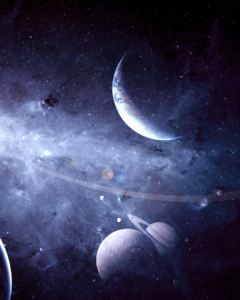 Keiron: In Volume II, I am concerned with the meanings of Saturn and Neptune in combination with other planetary archetypes, such as the pairings of Sun-Saturn and Moon-Saturn, and Mercury-Neptune and Venus-Neptune. These pairings are indicated by the existence of specific geometric relationships (“aspects”) between the planets in individual birth charts. I consider Saturn and Neptune specifically as a pair in the last chapter of Volume II, and then I am concerned with the meaning of Saturn-Neptune combinations both in birth charts and in collective experience during particular time periods.
Keiron: In Volume II, I am concerned with the meanings of Saturn and Neptune in combination with other planetary archetypes, such as the pairings of Sun-Saturn and Moon-Saturn, and Mercury-Neptune and Venus-Neptune. These pairings are indicated by the existence of specific geometric relationships (“aspects”) between the planets in individual birth charts. I consider Saturn and Neptune specifically as a pair in the last chapter of Volume II, and then I am concerned with the meaning of Saturn-Neptune combinations both in birth charts and in collective experience during particular time periods.
The meanings of the astrological principles often have resonances with mythic figures of the same name, but the astrological planetary archetypes are more encompassing in their meaning than any single specific mythic deity. For instance, Saturn is reflected in the mythic Kronos, the Grim Reaper, and Father Time, but it is also related to the archetypal/psychodynamic principles of the shadow, the senex, and the super-ego. The astrological Neptunian pertains to the experience of oceanic consciousness and dissolution (suggested by the mythic Poseidon/Neptune as the god of the sea) but it also pertains to the universal compassion of the Buddha and altruistic love and sacrifice of Christ. Neptune has much to do with the religious instinct in Jungian psychology, and the archetype of the spirit, as well as projection, dream, fantasy, and escapist urges. Volume I details the range of mythic and psychological correspondences with the major planetary archetypes in astrology.
Volume II then applies archetypal astrology in focusing on expressions of Saturn and Neptune (and to a lesser extent Jupiter) in human psychology and culture. It considers a wide range of examples of individuals with different aspects/alignments involving Saturn and Neptune—including Schopenhauer and Nietzsche, Freud and Jung, Kate Bush and Joni Mitchell, William Wordsworth and Friedrich Holderlin, Joseph Campbell and Albert Schweitzer, and many more prominent figures. The Saturn archetype pertains to core human experiences of time, mortality, endings, pressures, duties, rules, limitations, and maturation, It often finds expression in weighty concerns, seriousness, conservatism, realism, pessimism, pragmatism, judgment, guilt, inferiority, necessity, and a felt sense of moral or circumstantial pressure. The Neptune archetype, by contrast, pertains to spirituality, myth, dream, visions, yearnings, idealism, the imagination, sensitivity, empathy, compassion, imitation, transcendence, dissolution, idealization, sacrifice, and other related themes.
My aim was to let the archetypes speak through the range of examples so as to reveal different inflections and themes associated with them. My analysis then considers these themes in the context of individuation. In so doing, we can learn from the thinkers and artists with particular astrological combinations, benefitting from their unique experience of these archetypes as they find expression in life, in ideas, and in art.
Angela: Volume III moves on to “Pluto and Uranus in Psychology, Spirituality, and Culture.” It seems like you might be working your way through the planets? Why Pluto and Uranus to follow up on Saturn and Neptune?
Keiron: Moving from the Earth outwards, away from the Sun, the sequence of the planets is Saturn, Uranus, Neptune, and then Pluto. But I chose to cover Saturn and Neptune in Volume II because they are so contrasting in their meanings and qualities. In Volume III, I turn first to the Pluto archetype as this has much to do with the underworld of the unconscious and the death-rebirth process that is so central to individuation and the transformation of the psyche. I wanted to end with Uranus as this principle pertains to experiences of liberation, freedom, birthing, and awakening that may occur after the long struggle through the Plutonic underworld. I had in mind Czech-American psychiatrist Stanislav Grof’s perinatal rebirth sequence. Volume III builds on what has been covered in Volume II, and it ends with a study of the Uranus-Pluto and Uranus-Neptune archetypal combinations.
My focus in volumes II and III is on the range of archetypal themes associated with each combination. The book chapters, and the sections within chapters, are organized around such themes. For example, chapter 23, on the Saturn-Pluto archetypal complex, is called “Herculean Labors and Alchemical Transformation,” and includes sections on “Apocalyptic Scenarios and the End of Days, “Discipline and Drive,” and “The Psychodynamics of Ego-death.”
Likewise, the Uranus-Neptune chapter (“Individual Spirituality and Religious Revelation”) includes the sections “Technology and Transcendence,” “New Age Religion,” and “Cosmopolitan Idealism and the Myth of Individualism.” Again, these themes are explored through a wide range of examples, of both individual astrological birth charts and world transits pertaining to historical eras.
This kind of emphasis on archetypes associated with planetary combinations distinguishes archetypal astrology from other forms of astrological practice, of which there are many. I wanted to show how archetypal astrology pertains to the grand lines and perennial universal themes of human experience, as well as to the depths and dynamics of the unconscious, and the heights of spiritual revelation and transcendence, helping us to chart and more skillfully participate in our own biographical developmental trajectory and the evolution of the collective through history.
Angela: I assumed that archetypes, because they are universal, are fairly static. That the hero will always be the hero; the trickster will always be the trickster. But you’ve suggested relating to them by being aware of their “changing patterns” as one moves through life. I wondered if you could say more about how archetypes have patterns and evolve (or devolve, as the case may be).
Keiron: Archetypes appear to be unchanging in their core, universal meanings, but their modes of manifestation and expression in human affairs differ from one person to the next and evolve over time. Each of us will experience the heroic urge, such as the willingness to pursue a goal at any cost or to sacrifice ourselves to a cause, but the form of heroism in you will be different to the heroic impulse in me. This is the nature of an archetype: a universal factor and principle that manifests uniquely in the concrete particulars of individual experience.
In terms of astrology, we can see different modes of expression of the same archetypal combinations over time. For example, periods of history accompanying major alignments between Saturn and Pluto are typically characterized by profound, weighty, sometimes traumatic experiences that leave an indelible mark on the collective psyche, but the particular form of the crises and events varies from one period to the next. Thus Saturn-Pluto transits coincided with the start of the two world wars, then 9/11 and the war on terror, and most recently the Covid-19 pandemic. Similar themes were evident in these events, but they obviously also reflect the unique evolving context of world history.
Also, archetypes are not just static images or ideals, but dynamisms, drawing on the power of instincts. They animate us, and cause us to think, say, and do things we otherwise, on our own will, would not. The description of archetypes as gods reflects the reality of this experience. Today, of course, we lack a sense of being animated by godlike powers. We only recognize our own will and the external causal conditioning factors described in science. Astrology, coupled with a Jungian understanding of archetypes, can allow us to recover a mythic sensibility and thus to orient ourselves to the deeper powers behind our experience.
Angela: You say in Volume I that “Engaging with the archetypes constitutes a way or path by which we might participate on a daily basis with the great powers and structuring principles of the universe.” It didn’t occur to me until now, but looking at the “structuring principles of the universe” seems like it could border on theology. If the universe is structured, it bears asking by who or what the “great powers” are, no? Is that a direction your work takes or do you consider the psyche to be the “great power”?
Keiron: I see archetypes as rooted in a spiritual dimension of reality—as “personalities and powers of the dynamic divine,” to borrow a description from Sri Aurobindo. This spiritual dimension is to be accessed in and through the unconscious psyche. We might understand archetypes polytheistically as symbolized by a pantheon of gods and goddesses or as aspects of a single spiritual power. Jung uses the term “the Self” to represent something like God, although he was largely agnostic as to whether God exists as a metaphysical reality. I myself see archetypes in both polytheistic and monotheistic terms, as different facets or masks of God, understood as an encompassing spiritual ground and authority, manifest in each of us through the Self—the deeper core of what we are. The Self is at once God within us and our own innermost individual uniqueness. Astrology can help to illuminate the individuation process by which we might better attune to the Self.
Angela: DJA is a longstanding and well-regarded program at Pacifica, following a hybrid model of attendance. But recently you and your colleagues have added a fully online track (DJO) that will allow students to purse a Ph.D. completely online. The program is starting this Spring. Why is this important and what are you most looking forward to in the new DJO cohort?
Keiron: We’re delighted to offer this new online track to make the Jungian and Archetypal Studies program available to people who are unable to travel to attend the hybrid residential sessions or just prefer online learning. It’s exciting to be able to draw in students from farther afield and to continue to nurture and evolve the Jungian field through the research and publications of cohorts of students moving through the program. We believe that the DJA and DJO tracks provide a first-rate education in the ideas of Jung and James Hillman, both in terms of the range of courses offered and the depth of critical engagement. It’s an honor to be a part of it. DJO is Pacifica’s first fully online program and marks an important development in the life of the institute.
Angela: Lastly but not least, when may we look forward to Volume IV? Does it have a subtitle yet? And is there anything else upcoming in your work and career that we might like to know about?
Keiron: I’m hesitant to commit to a deadline for Volume IV as the first three volumes have been so long in the making, requiring extensive research over many years. I need a rest! Volume IV will be slightly different in its style and content in that I will be employing archetypal astrology—specifically alignments formed between Uranus, Neptune, and Pluto—to look at cultural phenomena that potentially contribute to the emergence of a new myth or the renewal, in a different form, of a perennial spirituality. It might be subtitled something like “Revelations of a New Myth and the Evolution of Religious Consciousness.” I have the draft of an introduction (which I quote on the back cover of volumes I through III), and copious notes but in rather inchoate form. This is likely to be my next main writing project, although I have ideas for two or three other books.
In the near future, I am giving a lecture presentation on The Way of the Archetypes, hosted by Pacifica Extension. It’s open to everyone and free to attend. Details may be found here.
Angela: I’ve learned so much about archetypes in this interview and am looking forward to your new writings! Thank you so much for your time and responses.
Keiron: Thank you very much for the interview and your interest in my work.
To learn more about M.A./Ph.D. in Depth Psychology with Specialization in Jungian and Archetypal Studies (Hybrid-DJA & Fully Online-DJO) program, visit us here.
To learn more about The Way of the Archetypes, you can visit www.itas-psychology.com, or find Volume 1, Volume II, and Volume III on Amazon.
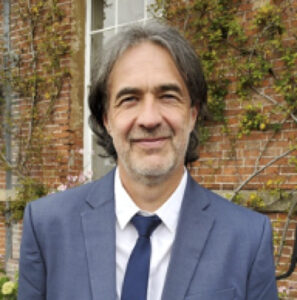
Keiron Le Grice is a professor of depth psychology in the Jungian and Archetypal Studies specialization and the Psychology, Religion, and Consciousness program at Pacifica Graduate Institute, California. He is the author of several books––including The Archetypal Cosmos, The Way of the Archetypes volumes I, II, and III, The Rebirth of the Hero, and The Lion Will Become Man––and co-editor of Jung on Astrology, a compilation of Jung’s writings on this topic. Keiron is also the founder and former co-editor of Archai: The Journal of Archetypal Cosmology, now serving as senior editorial advisor. At Pacifica, he teaches courses on alchemy, synchronicity, archetypal astrology, Gnosticism, and the philosophy of Friedrich Nietzsche.

Angela Borda is a writer for Pacifica Graduate Institute, as well as the editor of the Santa Barbara Literary Journal. Her work has been published in Food & Home, Peregrine, Hurricanes & Swan Songs, Delirium Corridor, Still Arts Quarterly, Danse Macabre, and is forthcoming in The Tertiary Lodger and Running Wild Anthology of Stories, Vol. 5.

